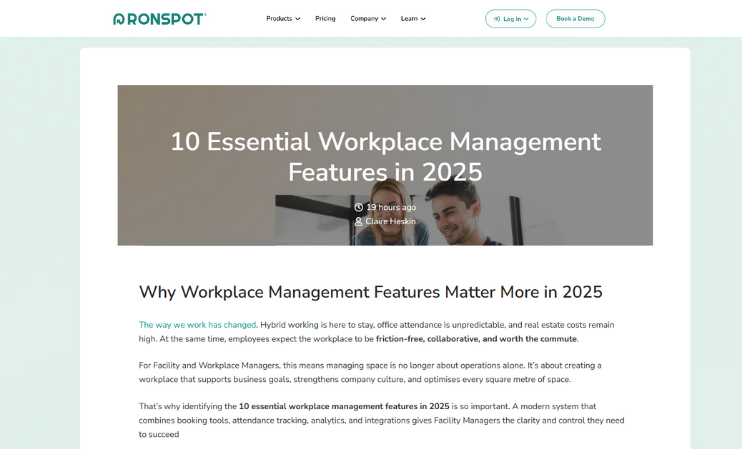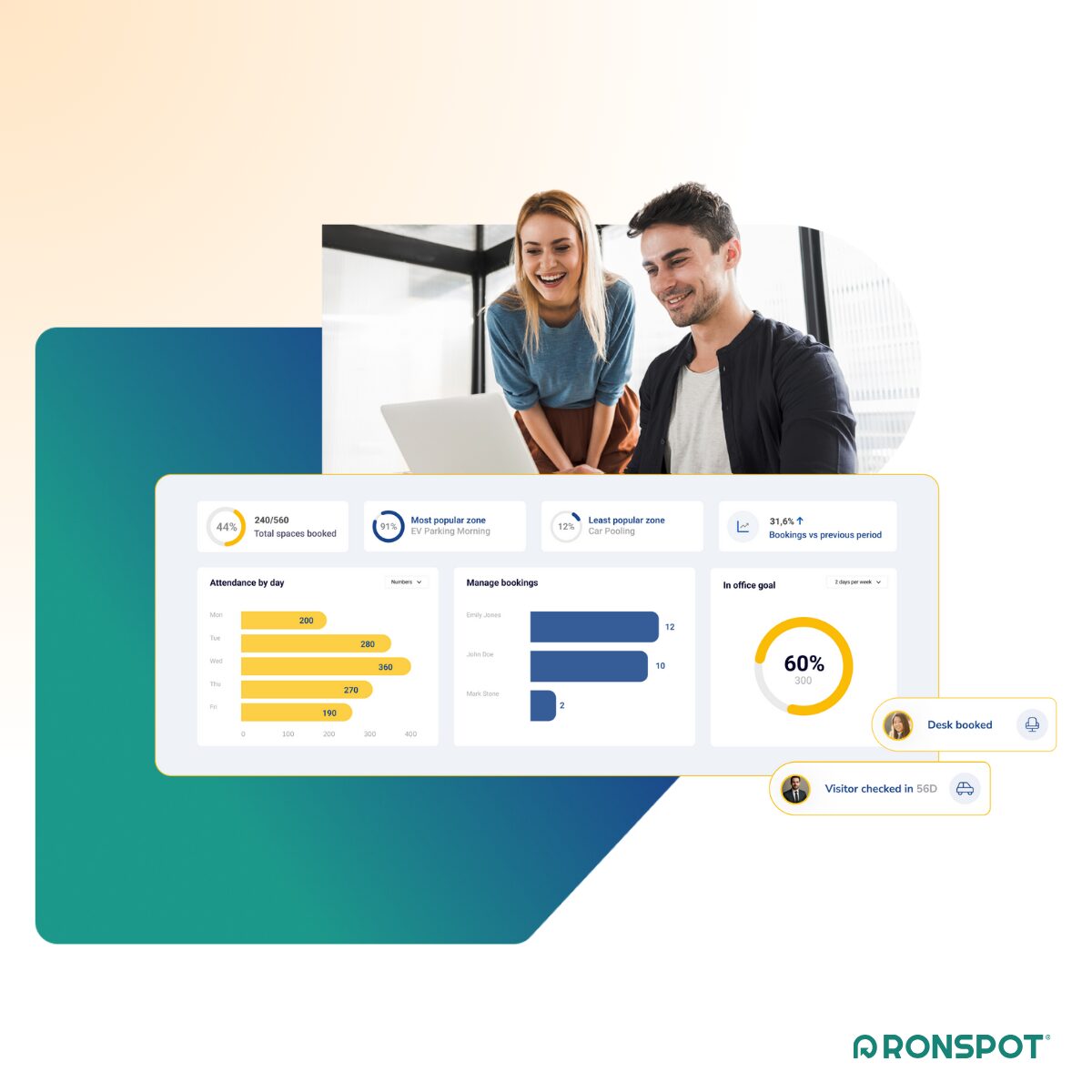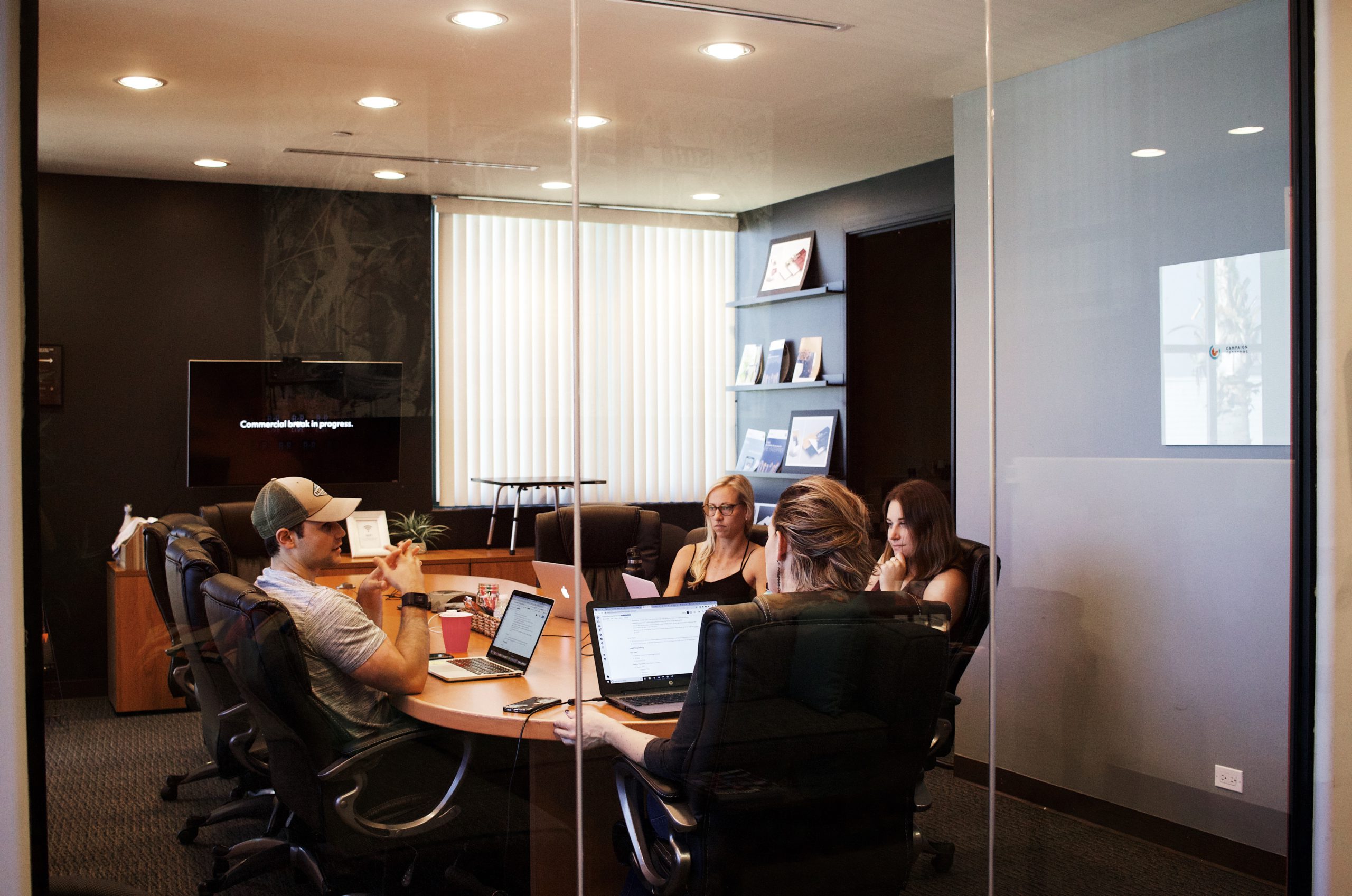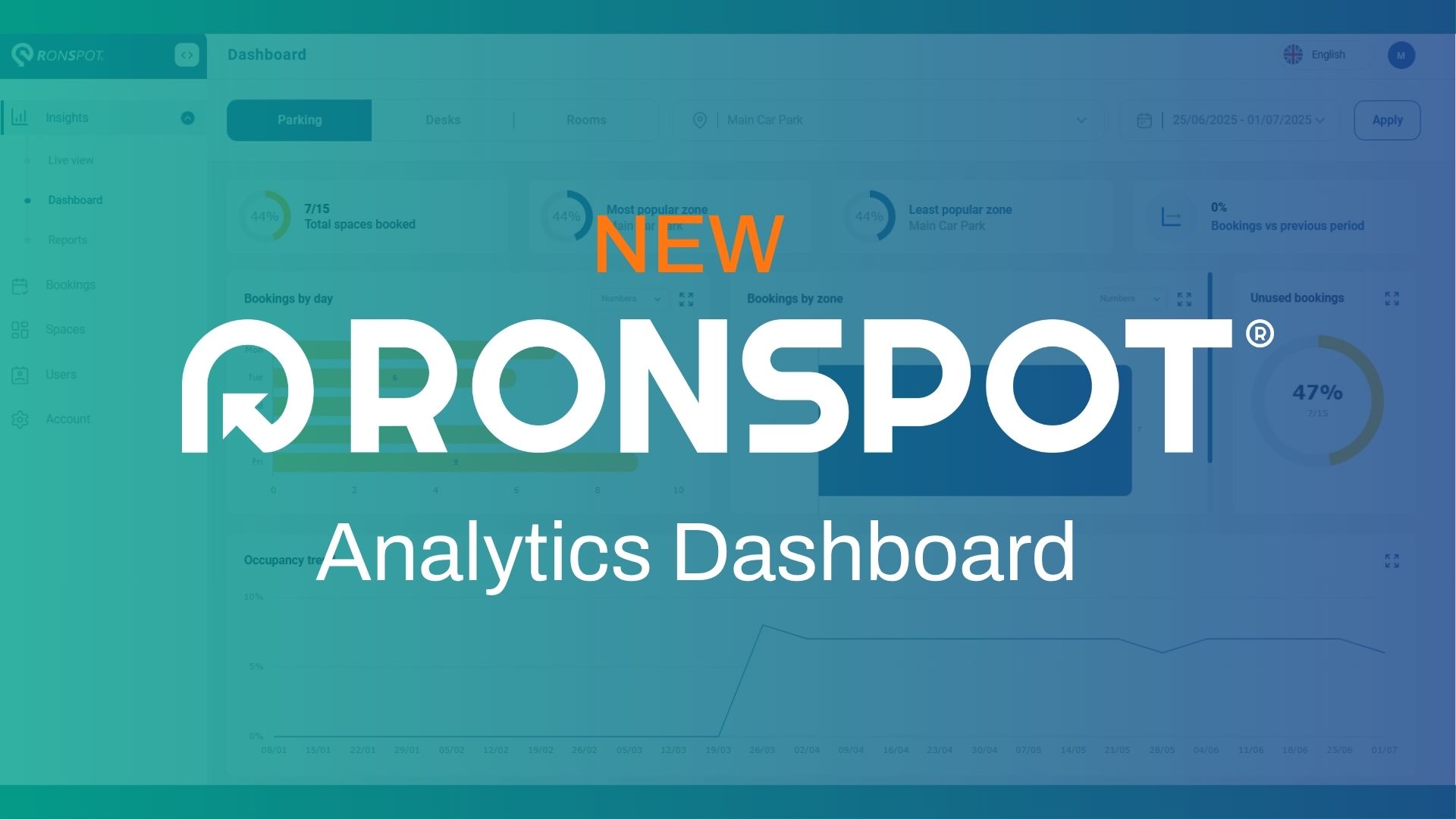Workplace Management Systems: The Strategic Guide 2025
The modern workplace has fundamentally changed. Enterprise leaders now manage hybrid workforces across multiple locations while executives demand ROI on every square foot of real estate. Traditional facility management approaches are failing, leaving organizations with oversized office footprints, frustrated employees, and decisions based on assumptions rather than data.
This transformation has made workplace management systems essential infrastructure for enterprise success. The right platform doesn’t just manage facilities—it orchestrates people, space, and technology to deliver measurable business outcomes. When workplace management is strategic, everything else runs smoother.
Why Workplace Management Systems Drive Enterprise Success
Every enterprise needs a workplace strategy that works for distributed teams, cost-conscious executives, and evolving business needs. Modern workplace management systems provide the framework to achieve this by aligning processes, technology, and people across multiple locations.
These platforms play a crucial role in organizational strategy, helping businesses make informed decisions about portfolio optimization, hybrid policies, and resource allocation. Companies implementing strategic workplace management report improved employee engagement, reduced operational costs, and increased overall efficiency.
The business impact is measurable: organizations using comprehensive workplace management systems typically see 30% reduction in real estate costs, 40% decrease in admin time, and 50% improvement in space-related decision speed.
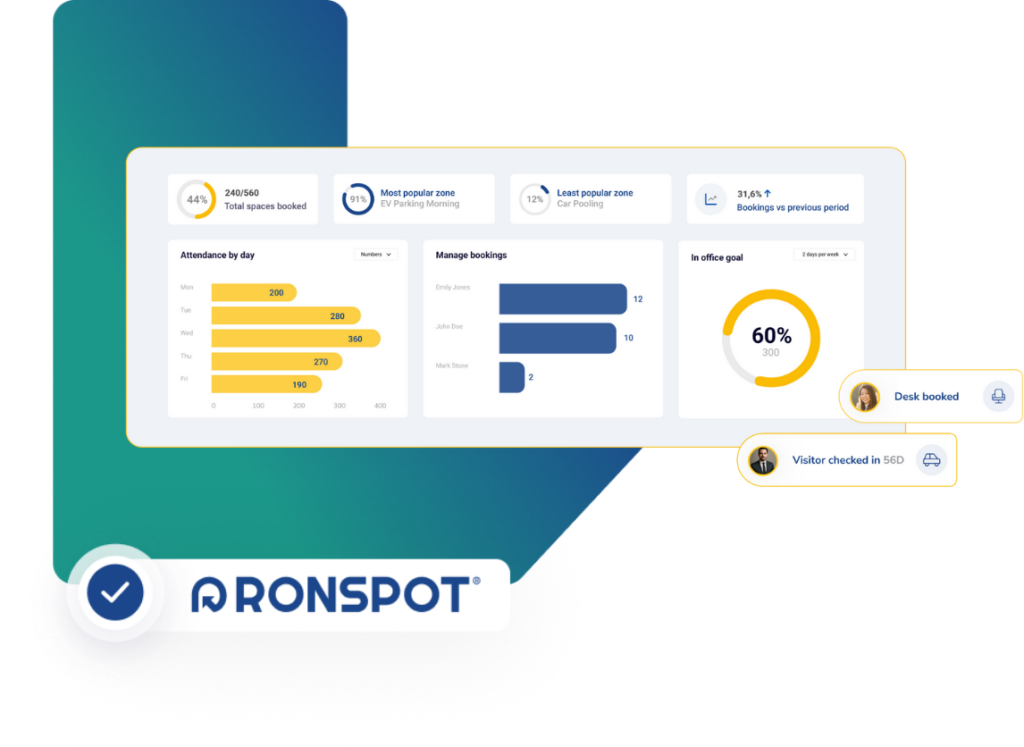
What Are Workplace Management Systems?
A workplace management system integrates people management, real estate optimization, and facilities operations into one centralized platform. Unlike traditional facilities management or basic booking tools, modern systems are holistic—aligning workplace design, technology, policies, and employee experience to achieve strategic business results.
Rather than juggling separate tools for desk booking, meeting room management, and space analytics, these platforms eliminate operational silos. This integration creates smoother operations, maintains data accuracy, and provides complete visibility into organizational assets, resources, and people utilization.
A strategic workplace management system answers critical questions like:
- How can we optimize office portfolios while supporting collaboration and productivity?
- What data should guide decisions about lease renewals, expansions, or consolidations?
- How do we create workplaces that attract talent while controlling costs?
Core Capabilities of Enterprise Workplace Management
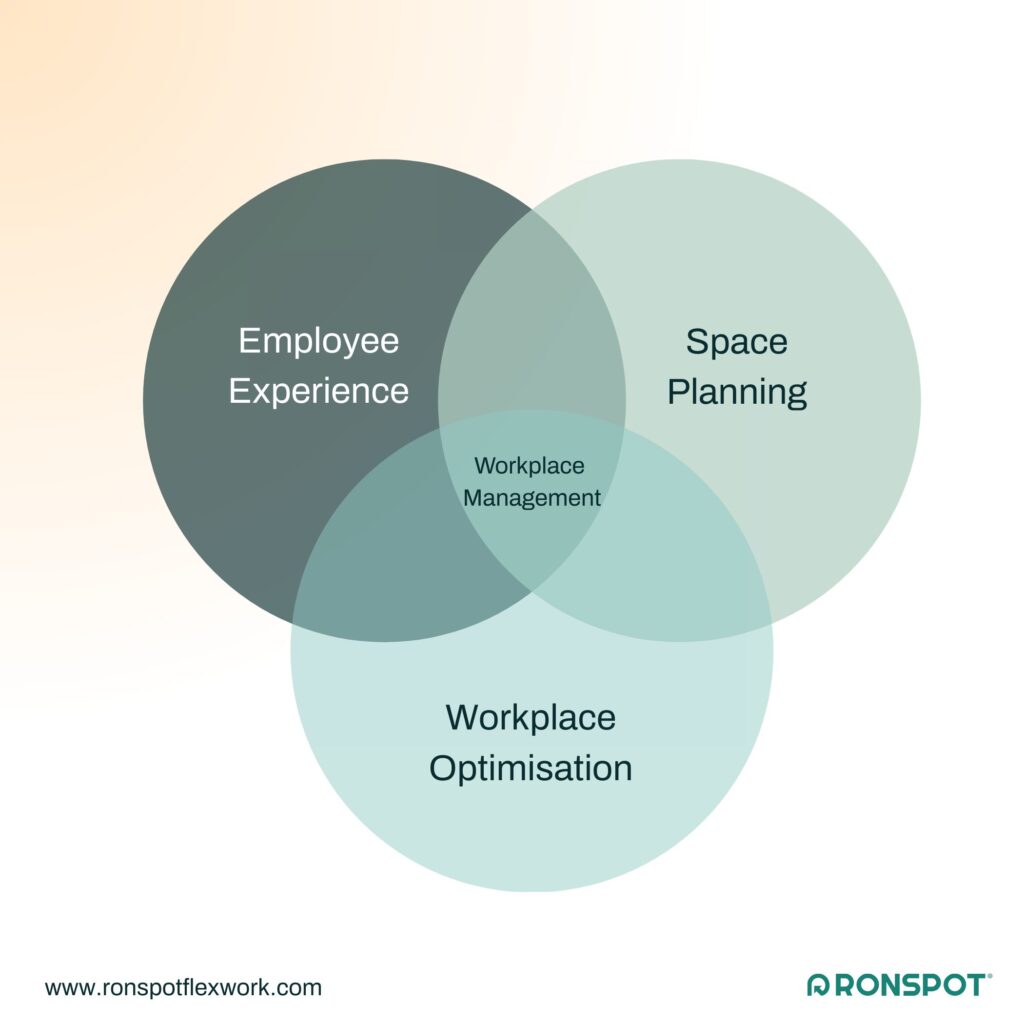
Employee Experience: Removing Friction from Office Attendance
A primary advantage of modern workplace management platforms is transforming employee experience. With hybrid work becoming standard, organizations struggle to attract employees back to the office. By providing intuitive interfaces for workplace services—desk booking, meeting rooms, parking, and amenities—these platforms eliminate the friction preventing office attendance.
Strategic employee experience management leads to higher retention rates, increased engagement, and measurable productivity improvements. Using data-driven insights, organizations continuously improve work environments to meet evolving hybrid workforce needs.
Essential Employee Experience Features:
- Mobile-First Booking Systems: Intuitive apps for desks, meeting rooms, parking, and amenities
- Colleague Location Services: Real-time visibility into teammate locations for collaboration
- Activity-Based Working Support: Multiple workspace types for focus, collaboration, and social connection
- Wellness Zone Management: Quiet rooms, ergonomic seating, and wellness amenity booking
- Integrated Visitor Management: Streamlined guest experiences that enhance security
Space Planning: From Static to Dynamic Optimisation
Key Space Planning Capabilities:
- Dynamic Floor Plans: Digital maps updating in real-time with occupancy data
- Scenario Planning Tools: Model headcount changes, policy shifts, and site consolidations
- Multi-Site Portfolio Management: Maintain brand standards while adapting to local requirements
- Occupancy Intelligence: Heatmaps and utilization tracking to identify optimization opportunities
- Predictive Analytics: Forecast space needs based on business growth and work patterns
Strategic Outcomes:
- Reduced wasted square footage across portfolio
- Better balance between capacity and demand
- Higher employee satisfaction scores
- Support for ESG targets through optimised resource usage
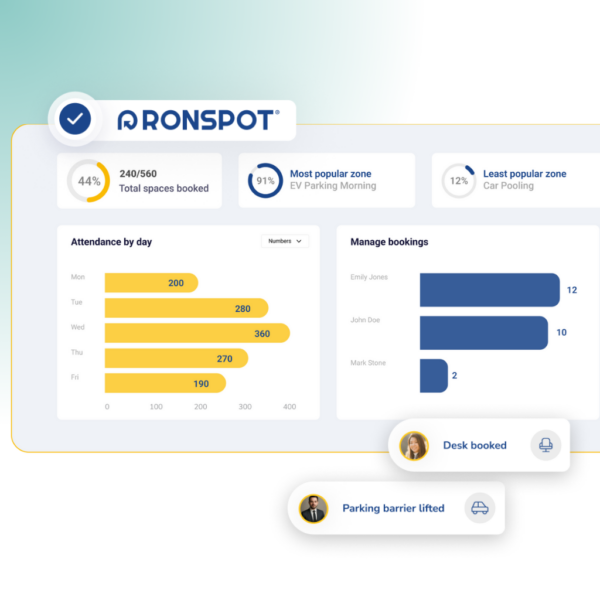
Workplace Operations: Data-Driven Operational Excellence
Workplace Operations ensures every square meter works efficiently without sacrificing comfort or productivity. This requires accurate data collection, intelligent automation, and seamless integrations across enterprise systems.
Modern optimization goes beyond basic analytics to provide predictive insights that help leaders stay ahead of challenges rather than constantly reacting to problems. Integration with existing enterprise systems creates a single source of truth for workplace decisions.
Core Optimisation Features:
- Integrated Analytics Dashboards: Unified view of occupancy, bookings, and policy compliance
- Predictive Usage Modeling: Forecast attendance patterns and peak demand periods
- Intelligent Automation: Auto-release unclaimed bookings, trigger building systems, send alerts
- Enterprise Integrations: Connect access control, HR systems, calendars, and BI platforms
- Sustainability Tracking: Carbon emissions monitoring and waste reduction insights
- Energy Management: Optimize HVAC and lighting based on actual attendance
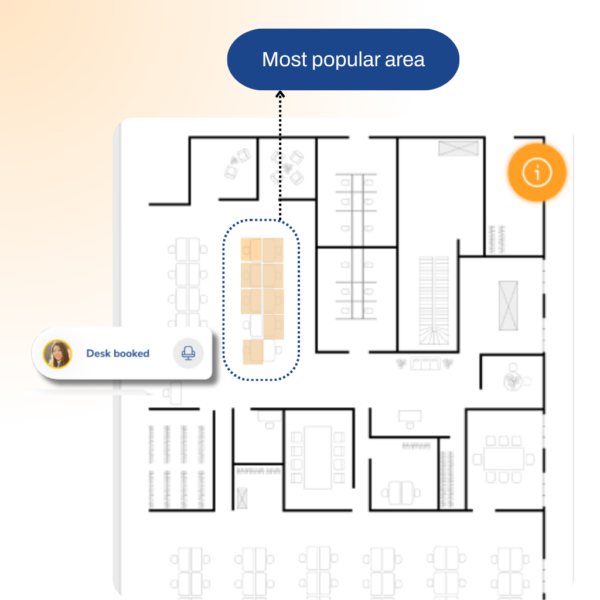
Business Impact: Measurable Results from Strategic Workplace Management
Investing in comprehensive workplace management systems delivers quantifiable returns across multiple business dimensions:
Operational Efficiency Gains:
- Increased productivity through optimised work environments
- Streamlined processes that eliminate administrative friction
- Automated compliance with hybrid work policies
Cost Optimisation Results:
- Data-driven space planning reduces real estate overhead
- Energy efficiency improvements lower operational costs
- Improved space utilization eliminates waste
Employee Engagement Improvements:
- Workplace designed around employee needs strengthens retention
- Reduced friction in daily workflows improves satisfaction
- Better collaboration tools enhance team performance
Strategic Decision Support:
- Real-time data enables confident real estate decisions
- Portfolio optimisation based on usage patterns, not assumptions
- Predictive insights support proactive workplace strategy
Organisations treating workplace management as a strategic function consistently outperform peers in employee satisfaction, operational efficiency, and cost management.
Common Enterprise Workplace Management Challenges
Even with clear strategies, enterprise facility managers face recurring challenges that impact efficiency, frustrate employees, and complicate business goal achievement.
Employee Experience Gaps
- Employees arrive to find no available desks despite showing “available” in booking systems
- Limited visibility into colleague locations reduces collaboration opportunities
- Insufficient workspace variety leads to frustration and continued remote work preference
- Disconnected systems create multiple apps and logins for basic workplace functions
Space Planning Obstacles
- Extreme utilisation imbalances (Tuesday-Thursday overcrowded, Monday-Friday underutilised)
- Static layouts that cannot adapt to changing team needs
- Dead zones consuming budget while high-demand areas remain cramped
- Lack of data to support portfolio optimization decisions
Operational Inefficiencies
- Fragmented systems creating data silos across booking, access control, and HR platforms
- Reactive rather than proactive problem-solving approaches
- Difficulty justifying space investments without comprehensive utilization data
- Inconsistent policy enforcement across multiple locations
Workplace Management Wins: What Success Looks Like
When organizations implement comprehensive workplace management systems, the transformation is measurable across multiple dimensions:
Cost Management Success:
- Optimize portfolio footprint and renegotiate leases from positions of strength
- Reduce energy and operational costs through right-sized space utilization
- Eliminate waste through data-driven resource allocation
Employee Experience Wins:
- Eliminate time waste from space hunting and booking conflicts
- Improve collaboration through coordinated team presence planning
- Create office environments that employees genuinely prefer over home offices
Compliance and Sustainability Impact:
- Track hybrid policy compliance with comprehensive data rather than estimates
- Reduce environmental footprint through optimized resource utilization
- Support ESG commitments with measurable space efficiency improvements
Strategic Decision Enhancement:
- Make portfolio decisions—consolidation, expansion, redesign—based on usage insights
- Predict future space needs with confidence
- Align workplace strategy with broader business objectives
Essential Features for Enterprise Workplace Management in 2025
Workplace management covers a lot of ground—from making sure the right spaces are available when employees show up, to keeping those spaces flexible, efficient, and aligned with business needs. To understand the capabilities and functionality you need in your workplace management system, it is best to explore it through the lens of Employee Experience, Space Planning and Workplace Operations.
Before understanding which features are critical for your organisation, its advised to start with a comprehensive audit of your current workplace operations. This will give you a sense of what elements of your workplace management strategy need most attention.
Employee Experience
Modern employee experience requires seamless, mobile-first interfaces that integrate with existing workflows. The goal is removing every barrier to office attendance while providing superior workplace experiences.
Critical Capabilities:
- Intuitive mobile applications for all workplace bookings
- Colleague finder functionality with real-time location data
- Integration with communication platforms (Teams, Outlook)
- Comprehensive amenity management (parking, catering, wellness spaces)
- Visitor management with security integration
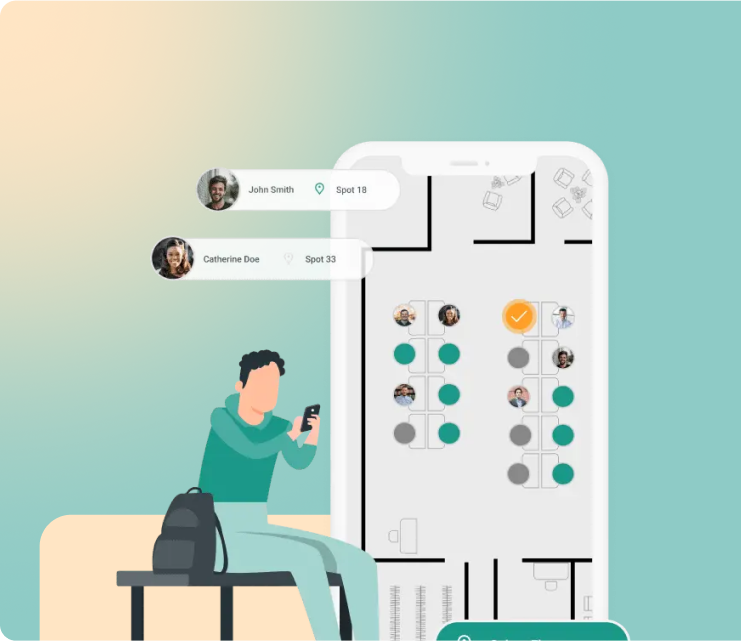
Advanced Space Planning and Analytics
Space planning must be dynamic and data-driven to support portfolio optimization and changing business needs. Real-time insights enable continuous improvement rather than periodic adjustments.
Required Features:
- Live occupancy tracking
- Sensors or access control integration for critical data accuracy
- HR integration for accurate workforce planning and portfolio decisions
- Multi-site management with centralised oversight and local flexibility
- Utilisation heatmaps identifying optimization opportunities
- Predictive analytics for capacity planning
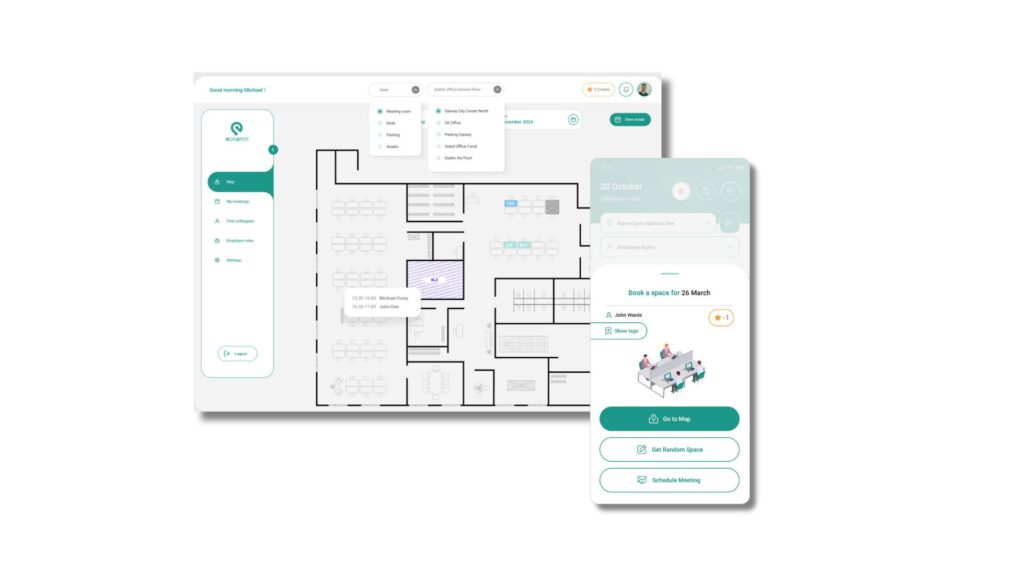
Intelligent Workplace Operations
Optimization requires automation and integration to deliver efficiency without increasing administrative burden. Smart systems proactively manage workplace operations while providing strategic insights.
Key Components:
- Automated booking management
- RTO policy compliance monitoring
- Building system integration (energy, lighting, security)
- Comprehensive analytics dashboards for leadership reporting
- Workflow automation reducing manual facility management tasks
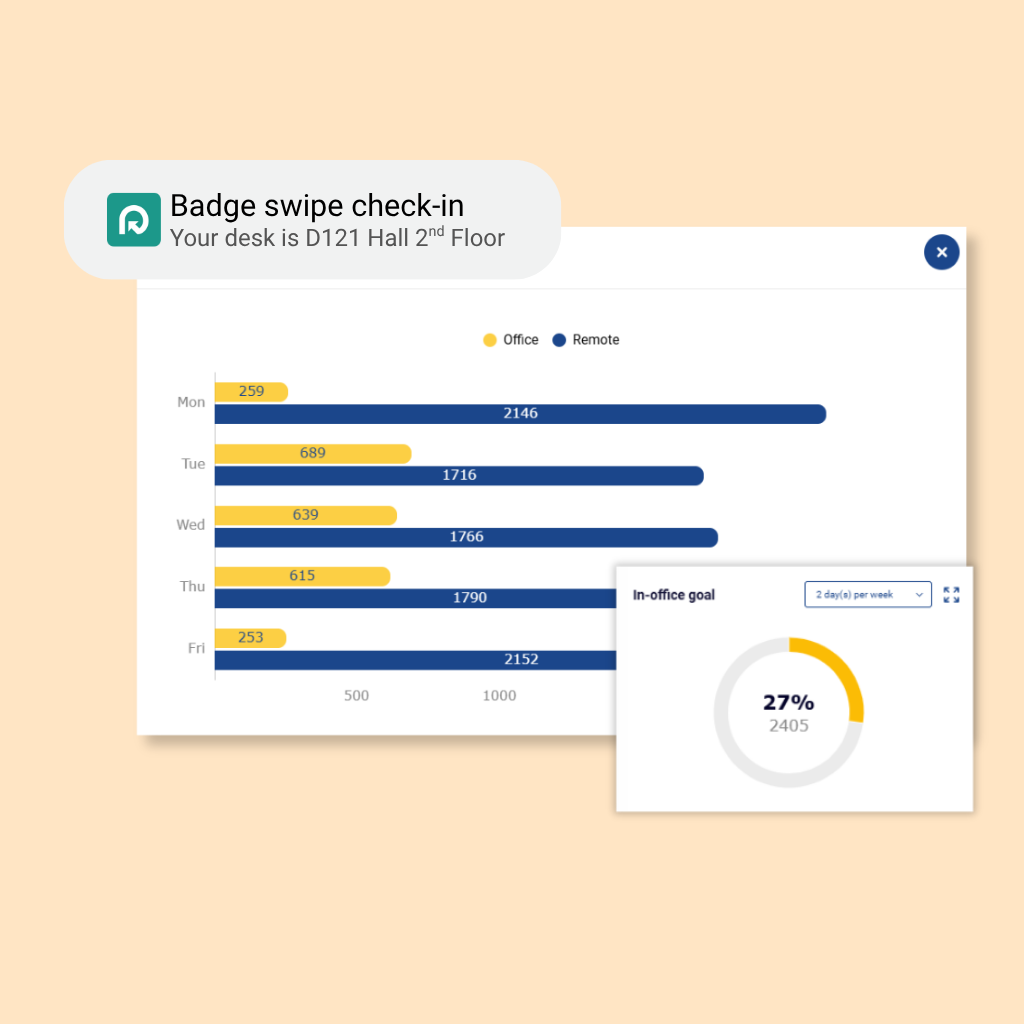
Workplace Management Platform Implementation Strategy: Building Your Business Case
Evaluation Criteria for Enterprise Solutions
When evaluating workplace management platforms, consider capabilities that solve strategic challenges rather than just operational tasks:
Strategic Considerations:
- Scalability across multiple locations and user bases
- Integration depth with existing enterprise systems (HRIS, security, building management)
- Data accuracy through sensor verification or access control validation
- Support for smart building solutions and IoT technology integration
- Vendor stability and enterprise support capabilities
Technical Architecture:
- Cloud-native platforms offering reliability and security
- API-first design enabling custom integrations
- Mobile-responsive applications supporting diverse device preferences
- Real-time data processing for immediate insights
- Compliance with enterprise security and privacy requirements
Building ROI Justification
Successful workplace management system implementations require clear ROI demonstration. Focus on quantifiable benefits that resonate with executive stakeholders:
Financial Impact Calculations:
- Real estate cost savings through optimized space utilisation
- Energy cost reductions from demand-based building management
- Productivity gains from improved employee experience
- Administrative cost savings through automation
Risk Mitigation Value:
- Reduced compliance risks through automated policy enforcement
- Improved employee retention reducing recruitment costs
- Better space planning reducing over-leasing risks
- Enhanced decision-making reducing costly real estate mistakes
Resources to Support Implementation Success
Practical, ready-to-use tools help you act quickly and effectively when selecting and implementing a workplace management system
Employee Experience
- Easy to Book App – Take a tour to see how simple it is for employees to book the space they need
- Works with Existing Tools – So employees can book directly from the tools they already use
- Well-being Strategy Guide – ABW layouts, quiet space setup checklists, and ergonomic best practices
Space Planning
- Desk Ratio Calculator – If you allocate desks by department, understand your true ratio when hot desks are included
Workplace Optimization
- Workplace Management Audit Template –Diagnose your workplace strategy gaps and prioritize how to fill them
- Adoption Tracking Dashboard – Monitor engagement levels by site and department
- ROI Calculator – Quantify the impact of under utilization to shape your business plan
The Future of Strategic Workplace Management
Workplace management continues evolving as technology advances, employee expectations shift, and business requirements change. Artificial intelligence, predictive analytics, and advanced automation will make workplaces more adaptive, efficient, and human-centered.
Organizations embracing workplace management as a strategic function position themselves to optimize operational efficiency while creating environments where employees thrive and businesses maximize resource value.
Transform Your Workplace Strategy
Workplace management is no longer back-office administration—it’s strategic infrastructure that aligns people, space, and technology to deliver measurable business outcomes. Organizations investing in comprehensive workplace management systems are best positioned to meet modern workplace challenges while preparing for future evolution.
Ronspot makes this transformation possible. Rather than managing individual tools and processes, Ronspot orchestrates your entire workplace ecosystem to work smarter, more efficiently, and more strategically.
Ready to see the impact on your organization? Book a demo with our workplace experts and discover how Ronspot can transform your workplace operations into a competitive advantage.
Other posts you might like…
10 Essential Workplace Management Features in 2025
Hot Desk Booking System – Ronspot is the Perfect Flexible Working Solution
Introducing Ronspot V13: Sleeker Design, Easier Booking
Explore Ronspot app version 13 for Android and iOS—now with a modern design, intuitive navigation, and a smoother user experience.
